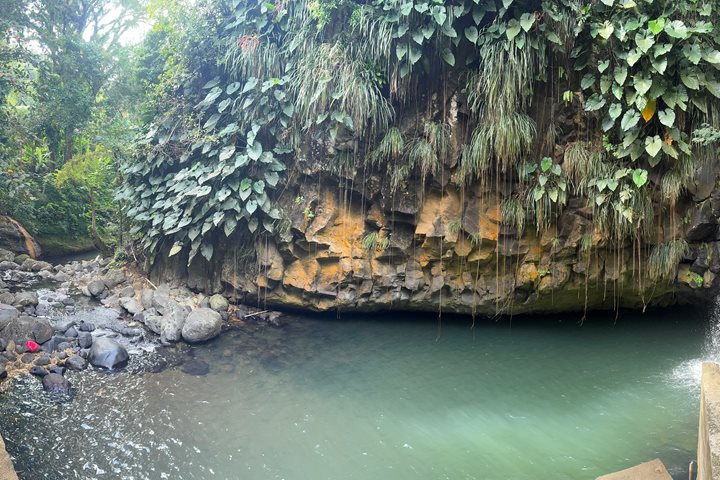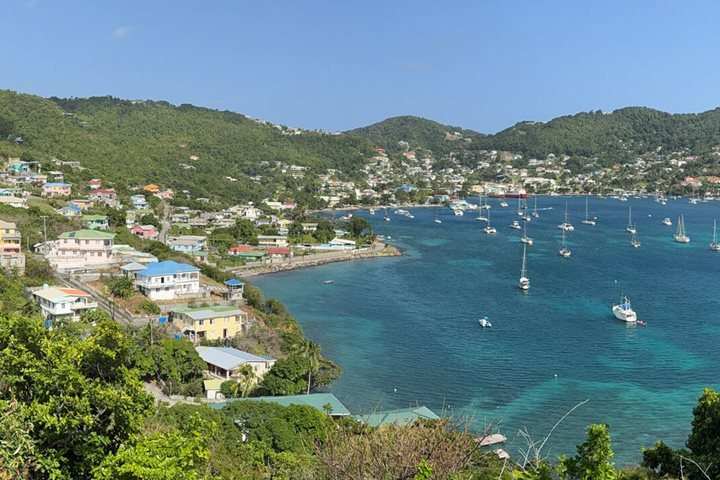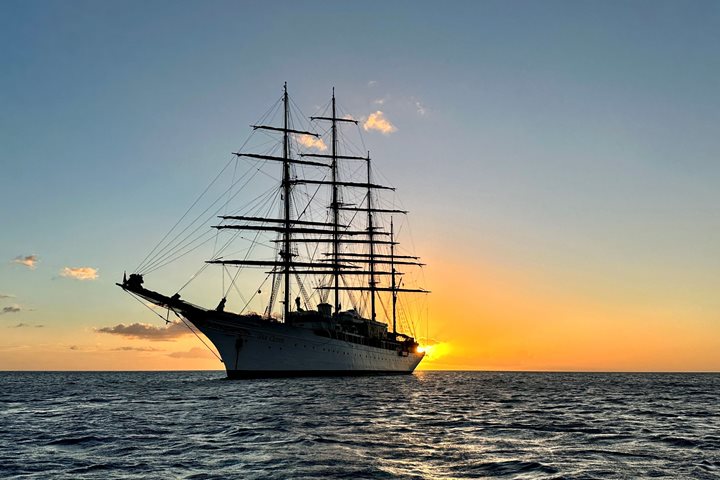The night sea was gentle, rolling with a soft, slow pitch, like the rocking motion of a hammock, as we sailed to Dominica. We came within sight of Dominica and Prince Rupert’s Bay at 6:30 a.m. We boarded tenders at 8:30 a.m. for our journey to the rainforest. We landed on a headland called Cabrits, a variant of the Spanish for “goat.” The sailors who stopped here periodically needed fresh meat and milk, so they let their goats run wild. On their return they had food and drink—18th-century refrigeration!
We boarded vans for the exciting one-hour ride to the rainforest atop Morne Diabolotin (or to use its Kalinago name, Waitukubuli, meaning “she whose body is so long.” The mountain was shrouded in clouds, and a strong wind was roaring through the trees—we were all impressed by the power of the wind. In the rainforest, we saw an endless variety of plants and trees. The names of the trees in the local patois are an education. For the infamous lowyé kaka, whose wood is used for shingle roofing, the descriptive “kaka” identifies the rather noxious smell of the tree when cut. Some guests had a sighting of the indigenous and rare jacko parrot. These birds are unique to Dominica and nest high in the mountains.
After our excursion to the rainforest and a scrumptious lunch featuring fresh-caught mahi, we visited the British Fort Shirley dating from the 18th century. The fort was begun in 1774 and finally completed after four years. It was built entirely by local slaves. The fort is massive and spreads across most of the 200 acres of the Cabrits’ headland. It has only been possible to recover a small part of the original; strangler vines and jungle cover the rest of the compound. The fort never saw action and existed principally as a deterrent. It was designed by American architect Harrison to protect the Royal Navy at anchor in Prince Rupert Bay. The fort’s cannons could sweep the entire area in front of the town of Portsmouth. There was another battery across the bay and the two batteries made the bay inviolate. At its zenith, the fort had 700 enlisted men and a contingent of the 8th West Indian Regiment made up of slaves.
The fort was abandoned in 1852 and lay derelict and in ruin, covered by strangler figs and the jungle, until Dr. Lennox Honeychurch, a native of Dominica and an Oxford University PhD, undertook restoration in 1982. Forty years later, Lennox is still working on the restoration and has accomplished miracles. After our visit to the fort, we were treated to local Kubuli beer, rum punch, and complimentary fruit juice. A goodly number of us then went to the Purple Turtle Beach for a wonderful swim.
Dinner was on the Lido Deck. And what a dinner! We enjoyed the large, fresh-caught tuna with heaped plates and happy smiles. Tomorrow we sail to France and the Îles des Saintes.









